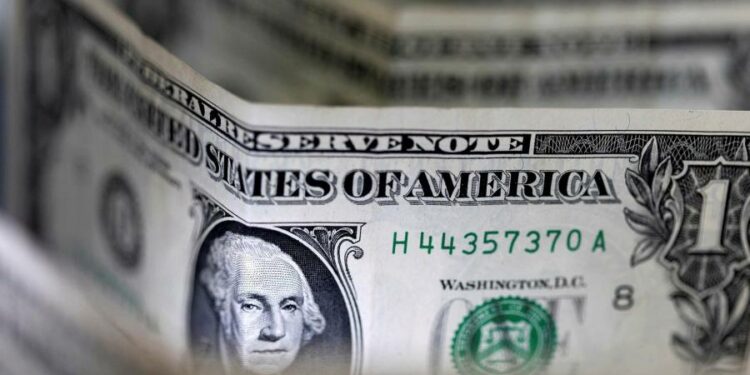US stocks rose on Friday, marking an upbeat end to a disappointing week, as strong retail sales data eased concerns about a global recession.
Wall Street’s S&P 500 share index climbed 1.3 per cent in early dealings, but remained on track for a weekly loss of more than 2 per cent. The technology-focused Nasdaq Composite gained 1.4 per cent.
In Europe, the regional Stoxx 600 equity index added 1.3 per cent.
The dollar index, which measures the US currency against six others and was heading for its third straight week of gains, slipped 0.3 per cent lower.
International oil benchmark Brent crude, which on Thursday fell to levels last seen before Russia’s invasion of Ukraine, added 2.6 per cent to $101.55 a barrel.
Data on Friday showed US retail sales rose 1 per cent month on month in June, exceeding economists’ forecasts for a 0.8 per cent gain.
Markets in recent months have been gripped by debate over whether the US economy is strong enough to withstand aggressive rate rises by the Federal Reserve in response to red-hot inflation, after downbeat business surveys cast a pall over the outlook. The S&P is about 20 per cent lower for the year-to-date.
“The consumer is still spending money, still confident, there’s still pent-up demand,” said Ron Temple, head of US equity at Lazard.
He cautioned, however, that this could firm the US central bank’s resolve to tighten monetary policy, with the retail sales numbers showing “the rate hikes so far have not had an effect”, in terms of cooling demand.
Futures markets are tipping the Fed to lift its main funds rate to almost 3.6 per cent by next February, from a range of 1.5 per cent to 1.75 per cent currently. US consumer prices rose at an unexpectedly rapid annual rate of 9.1 per cent in June.
A much weaker than expected Chinese GDP report also stoked some bullishness on Friday, adding to speculation that the Beijing government would respond by unleashing hundreds of billions of dollars of additional stimulus funds to shore up growth.
The world’s second-biggest economy expanded 0.4 per cent year on year in the three months to the end of June, below the 1.2 per cent forecast by economists, and down from the 4.8 per cent recorded in the first quarter.
“We think these kinds of numbers are only going to strengthen [the Chinese government’s resolve to push more stimulus for the rest of the year and that matters on a global level as well,” said Hani Redha, multi-asset fund manager at PineBridge Investments.
Hong Kong’s Hang Seng index, the main Chinese stock market accessible to international investors, fell 2.2 per cent on Friday, however, taking it 6.6 per cent lower for the week, in its largest weekly fall since March 2020.
In US Treasury markets, the yield on the benchmark 10-year note was steady at 2.96 per cent. This yield, which underpins debt prices worldwide, has dropped from about 3.5 per cent a month ago as recession fears fed demand for low-risk government debt instruments. Bond yields fall as prices rise.
The two-year Treasury yield traded at 3.14 per cent in a so-called inverted yield curve pattern that has historically preceded recessions.
The euro rose 0.4 per cent on Friday to $1.006, having fallen below $1 earlier this week for the first time in 20 years.











